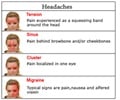Discover the potential of nasal ketamine spray as a safe and effective treatment for chronic migraine.
- Nasal ketamine spray offers a potential solution for refractory chronic migraine
- The convenience of nasal administration makes it a promising alternative to intravenous infusion
- Further research is needed to determine the optimal dosage and long-term effects of nasal ketamine spray for chronic migraine
Real-world study of intranasal ketamine for use in patients with refractory chronic migraine: a retrospective analysis
Go to source) . This article delves into the findings of the study and explores the potential benefits and considerations of using nasal ketamine spray for chronic migraine.
Exploring Nasal Ketamine Spray as an Alternative Treatment for Migraine
Traditional intravenous ketamine infusion has shown efficacy in treating chronic headache disorders. However, its administration requires specialized monitoring and expertise, limiting accessibility in outpatient settings. To investigate the viability of nasal ketamine spray as an alternative, researchers conducted a retrospective review of patients treated at a specialized headache center. During the study period, 242 individuals were prescribed nasal ketamine spray, with 169 agreeing to participate in interviews. The majority of participants reported daily headaches and had previously tried multiple preventive drugs. The study revealed that patients who used nasal ketamine spray reported positive outcomes, experiencing significant relief and improved quality of life.Efficacy and Benefits of Nasal Ketamine Spray
The participants used the nasal spray approximately six times per month, with nearly half of them considering it "very effective" and 39.5% finding it "somewhat effective." Furthermore, the use of other pain relievers decreased for the majority of participants while using the nasal spray. These findings highlight the potential efficacy and benefits of nasal ketamine spray in managing chronic migraine symptoms.Safety and Side Effects of Nasal Ketamine Spray
While the study demonstrated positive outcomes, it is important to consider the safety profile and potential side effects of nasal ketamine spray. Around 74% of participants reported experiencing side effects, including fatigue, double/blurred vision, and cognitive effects such as confusion or dissociation. However, these side effects were generally temporary and manageable.The study has a few limitations to note. It was conducted at a single tertiary headache center and primarily involved young White women, potentially limiting the generalizability of the findings. Additionally, participants often used the nasal spray alongside other medications, making it difficult to assess the spray's independent therapeutic benefits. The optimal dosage and clinical guidelines for nasal ketamine spray in migraine treatment also remain to be determined.
The study suggests that nasal ketamine spray may offer a pain-relieving effect with limited side effects for refractory chronic migraine patients in outpatient settings. However, further clinical trials are needed to validate these findings and establish comprehensive guidelines for their use. Nasal ketamine spray holds promise as a potential treatment option, providing hope for individuals who have not found relief through traditional approaches.
In conclusion, nasal ketamine spray shows potential as a convenient and effective alternative to intravenous infusion for chronic migraine treatment. While it offers benefits for many patients, careful consideration of safety, individualized treatment plans, and further research are necessary to fully understand its potential and establish standardized guidelines for its use in managing chronic migraine.
Reference:
- Real-world study of intranasal ketamine for use in patients with refractory chronic migraine: a retrospective analysis - (https://rapm.bmj.com/content/early/2023/05/03/rapm-2022-104223)















